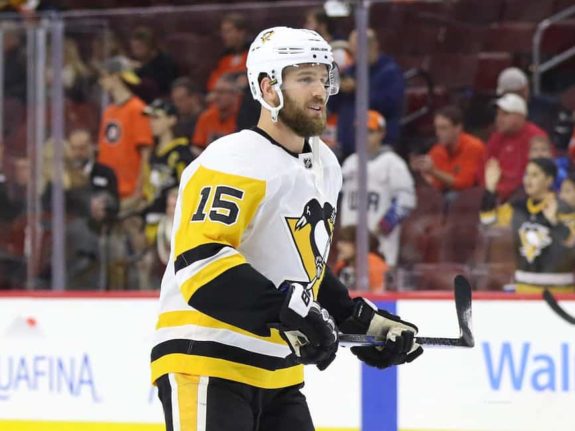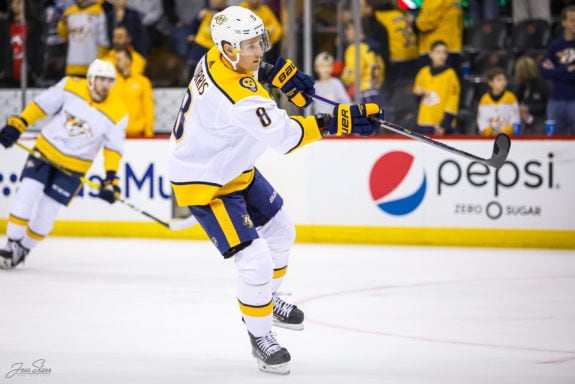Last season, in terms of their overall special teams, the Edmonton Oilers had one of the all-time historic seasons, finishing first in power-play percentage and second on the penalty kill. Overall, the combination of their power play and penalty kill statistics resulted in them having the second greatest combined special teams in NHL history, behind only the 1977-78 New York Islanders.
With the additions they’ve made in the offseason, along with the return of some crucial pieces on both sides of their special teams, the Oilers seem to have the tools at their disposal to replicate their 2019-20 success. Furthermore, with the continuation of this current coaching staff, with Jim Playfair and Glen Gulutzan returning as the associate coaches leading the penalty kill and power play, respectively, the system the Oilers utilize should continue to be incredibly effective.
2020-21 Power Play Outlook
In 2019-20, despite being slightly below average in terms of power-play opportunities and penalties drawn, the Oilers led the league in power-play goals and placed first in the NHL with the man advantage. With a top power-play unit featuring Connor McDavid and Leon Draisaitl, along with a prolific scorer throughout his career with the extra man in James Neal, the Oilers absolutely dominated teams when the opportunity presented itself.

The addition of Tyson Barrie, who in Colorado was in the conversation for best power-play anchor in the league, should improve the league’s best power play even further. The injury to Oscar Klefbom will hurt the Oilers due to his booming shot, but the puck movement ability and quickness of Barrie will be especially complementary to McDavid and Draisaitl. Furthermore, Draisaitl on the back end of their power play also has elite shooting ability and touch to negate the effect of losing Klefbom.
Most are expecting the Oilers’ top power-play unit to remain similar to the previous season with the exception of Barrie replacing Klefbom, as McDavid, Ryan Nugent-Hopkins, Neal, and Draisaitl formulate the rest of the unit. An underrated component of Edmonton’s upcoming power-play outlook is the potential significant improvement of the second power-play unit, which was virtually non-existent last season.

The additions of Kyle Turris and Jesse Puljujarvi will provide some major depth on the power-play unit and actually provide a decent alternative to spell for the top unit on occasion. Turris has played crucial power-play minutes during his previous stops in the league and Puljujarvi has the offensive talent and potential creativity to be an effective contributor on the power play, to go along with Kailer Yamamoto, Dominik Kahun, Tyler Ennis, Darnell Nurse, or Ethan Bear depending on the combination employed on the second unit.
2020-21 Penalty Kill Outlook
Despite scoring the lowest number of shorthanded goals last season with just three, the Oilers boasted the league’s second-best penalty kill. However, the lineup will take a major detrimental hit with the departure of their top penalty killer in Riley Sheahan. (from ‘With 3 signings in 3 days, Ken Holland transforms Edmonton Oilers’ 3rd line,’ Edmonton Journal, 10/12/2020) Next season, the penalty kill will definitely be less effective with the team’s newer additions not necessarily being players who have proven they can take on that responsibility.

However, the penalty kill should still be dependable overall with the usage of Jujhar Khaira and Josh Archibald and possible increase in special teams responsibility for Yamamoto. The defensemen on the penalty kill should remain the same, although the loss of Klefbom and Barrie’s defensive ineptitude should make the decision on the second penalty-killing unit’s defensemen interesting. Overall, the penalty kill lineup and system should remain similar, with the exception of a key cog in Sheahan.
Final Thoughts and Overall Special Teams Expectations
Fans should expect the Oilers’ special teams to remain at an exceptionally elite level, especially the power play. The additions of Barrie, Turris, Puljujarvi, and even potentially Kahun should translate to a power play that is somehow even better than the previous season.

Although the Oilers are not necessarily an elite team at drawing penalties and creating power play opportunities, they should be near the league leaders in terms of goals scored with the man advantage due to the creativity among their elite talents. Furthermore, I would expect the team to lead the league in power-play percentage and potentially even break the 30 percent threshold.
It would be a major surprise if the Oilers again finished in the top-three in penalty killing in the NHL due to their losses and lack of additions that could fill in when down a player. However, there are enough returning pieces crucial to the penalty kill, and the continuation and development of Jim Playfair’s aggressive penalty killing system to maintain the Oilers’ penalty-killing success. (from ‘With 3 signings in 3 days, Ken Holland transforms Edmonton Oilers’ 3rd line,’ Edmonton Journal, 05/04/2020)

Playfair deserves an immense amount of credit for completely revamping Edmonton’s typically underperforming penalty kill in just one season and I believe even with the loss of Sheahan, the Oilers’ style of play with the opponent on the man advantage will result in a top-10 finish, in terms of percentage.